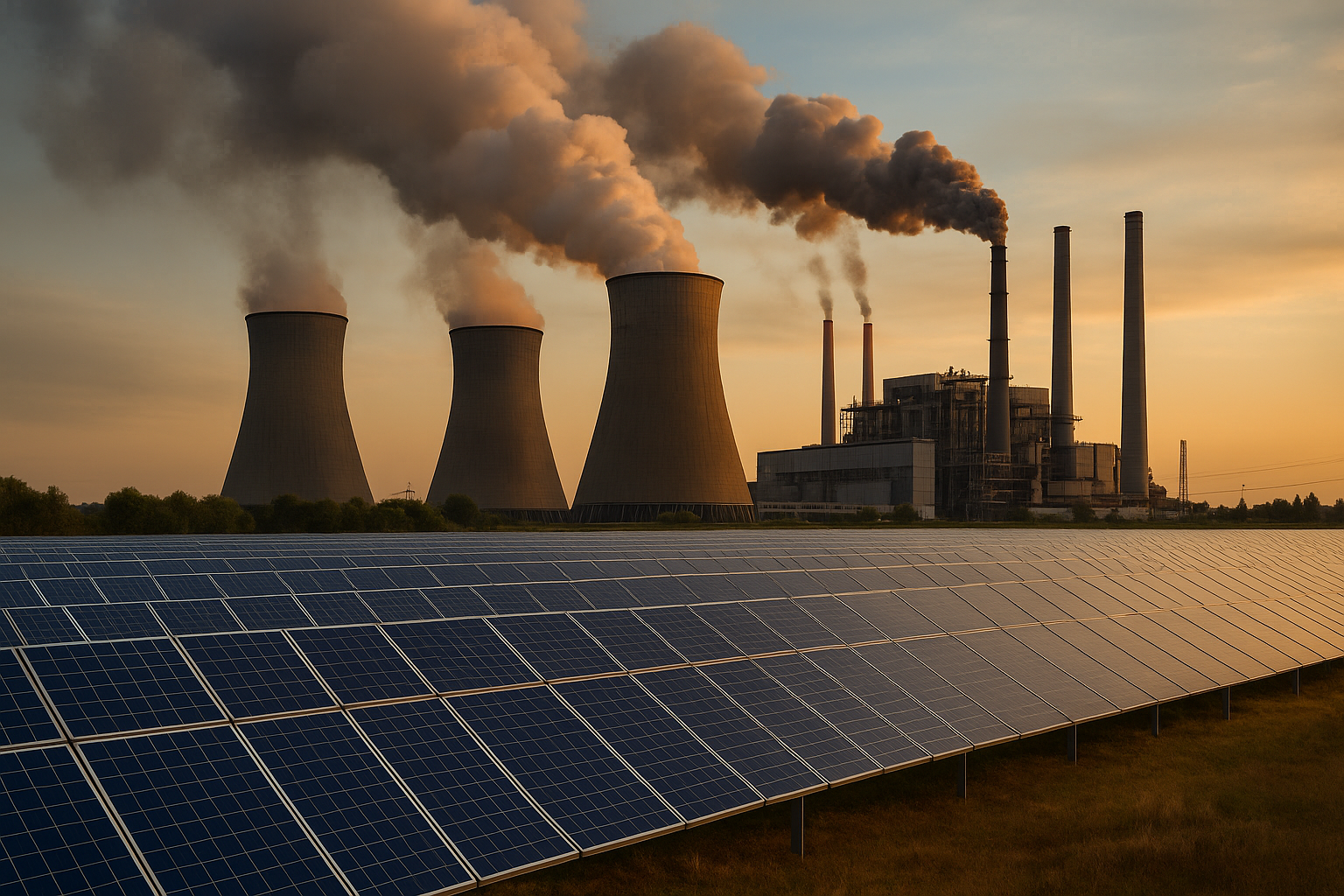Sustainability at a Cost: How clean energy fuels social vulnerability
The research claims that shifting to renewable energy does not automatically eliminate the risks traditionally associated with fossil fuel dependency. Rather, it can introduce new risks that are unevenly distributed across geographies and communities. Energy infrastructures such as hydropower dams, large-scale solar farms, and bioenergy plantations can displace communities, degrade ecosystems, and centralize power in the hands of a few, often mirroring colonial or exploitative development models.

A sweeping conceptual study warns that global efforts to transition away from fossil fuels risk creating new, uneven, and often invisible forms of disaster if energy planning fails to address embedded social vulnerabilities. The study, titled “Risky Energy Geographies: From Energy Transition to Disaster Risk Reduction”, published in Progress in Human Geography, challenges the widespread assumption that renewable energy systems are inherently safer or more just.
Through a cross-disciplinary lens combining energy geography and disaster risk reduction (DRR), the author argues that energy transitions can reproduce or even worsen existing inequalities if they proceed without structural reform. The study introduces the concept of “risky energy geographies” to explain how transitions, if narrowly focused on emissions and technical metrics, can obscure the long-term political, economic, and environmental risks they introduce, particularly for vulnerable populations across the Global South.
Do renewable energy systems eliminate risk?
The research claims that shifting to renewable energy does not automatically eliminate the risks traditionally associated with fossil fuel dependency. Rather, it can introduce new risks that are unevenly distributed across geographies and communities. Energy infrastructures such as hydropower dams, large-scale solar farms, and bioenergy plantations can displace communities, degrade ecosystems, and centralize power in the hands of a few, often mirroring colonial or exploitative development models.
The author highlights that energy transitions tend to be framed in optimistic narratives that emphasize environmental responsibility and technological advancement. However, this framing frequently overlooks the deep-rooted social and spatial inequalities that persist beneath the surface of green development. The study underscores that energy infrastructures are not simply neutral tools for climate mitigation. They are embedded in socio-political systems that determine who controls energy, who profits from it, and who is exposed to its risks.
In some regions, renewable energy installations have led to land dispossession, restricted access to natural resources, and labor exploitation. These outcomes challenge the idea that sustainability is inherently equitable or risk-free. The study makes clear that, unless equity is embedded in the design and governance of energy transitions, new forms of disaster may emerge, not from technical failure, but from social neglect and exclusion.
How do energy systems contribute to disaster risk?
The study expands the scope of disaster analysis by integrating critical insights from disaster risk reduction literature. It moves away from a hazard-centered view of disaster and instead focuses on vulnerability, exposure, and governance. the author argues that energy systems, past and present, are a key driver of disaster risk because they reshape landscapes, labor relations, and state responsibilities over time.
The research draws attention to how many disaster risks are not sudden or accidental but are instead produced slowly through systemic marginalization. For example, hydropower projects that appear environmentally sustainable may flood indigenous lands and disrupt community livelihoods. Solar mega-projects, while generating clean power, often benefit corporate actors while exacerbating inequalities in land ownership or infrastructure access.
This view complicates traditional boundaries between development and disaster. According to the study, energy transitions that lack a strong disaster governance component can inadvertently create new vulnerabilities. These may include under-maintained infrastructure in remote areas, grid instability, or socio-economic displacement tied to shifting energy markets.
The author urges policymakers to recognize that energy transitions intersect with race, class, gender, and geographic location. He proposes that understanding risk in this expanded sense, beyond natural hazards, requires examining who is made vulnerable in the name of sustainability, and how that vulnerability evolves through energy policy and planning.
What role should disaster risk governance play in energy transition?
The study argues that disaster risk reduction and energy transition planning must be treated as interdependent policy areas. The study critiques the siloed nature of climate adaptation, energy policy, and disaster risk planning, noting that without coordination, they may undermine each other’s goals.
The author proposes a framework of “risky energy geographies” to rethink how energy infrastructures are planned and governed. This framework encourages analysts and policymakers to anticipate not only environmental impacts but also the social, political, and economic risks that emerge over time. It challenges the dominant assumption that green energy is synonymous with progress and encourages a more nuanced understanding of the trade-offs involved.
The study also presses for equitable risk governance. This involves empowering local communities in decision-making, assessing the distribution of energy access, and ensuring that safety and resilience are not limited to elite or urban populations. Without such measures, energy transitions may entrench historical injustices and expose already marginalized groups to new forms of systemic disaster.
Examples from Latin America and sub-Saharan Africa demonstrate how renewable energy projects can become vehicles of exclusion when driven by top-down development logics. the author argues that these projects often externalize risk onto communities with little institutional power, reproducing uneven geographies of energy access and hazard exposure.
The study calls for a deep rethinking of energy policy through a disaster risk lens. It suggests that just transitions must go beyond emissions reduction and aim to correct historical inequalities while preventing the emergence of new disaster regimes.
- FIRST PUBLISHED IN:
- Devdiscourse









